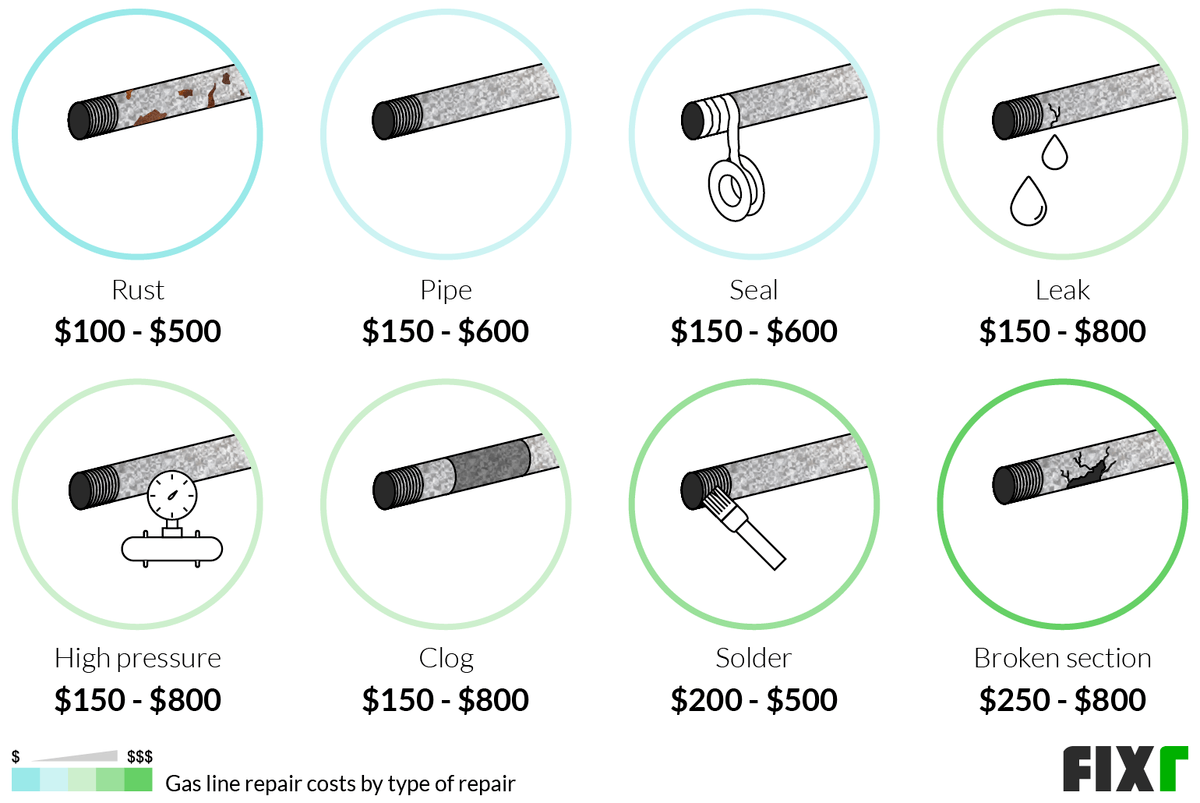Introduction

Image: www.cwoodsco.com
Gas line leaks can be a serious hazard, posing risks of explosion, fire, and carbon monoxide poisoning. If you suspect a gas leak, it’s crucial to take immediate action to ensure safety. This comprehensive guide will provide you with step-by-step instructions on how to fix a gas line leak effectively and safely.
Identifying a Gas Leak
- Smell: A strong odor similar to rotten eggs, sulfur, or a pungent chemical smell typically indicates a gas leak.
- Hissing: Leaking gas often produces a faint hissing sound near the source.
- Bubbles: If you suspect a buried gas line, inspect the ground for bubbles forming when you pour water over it.
Safety Precautions
- Evacuate: Immediately evacuate all occupants and pets from the premises.
- Ventilate: Open all windows and doors to air out the space and prevent gas accumulation.
- Call for Help: Contact your local gas company and emergency services for assistance. Do not attempt to fix the leak yourself unless you are a qualified professional.
Steps to Fix a Gas Line Leak
1. Gather Tools and Materials:
- Adjustable wrench
- Pipe wrench
- Thread sealant
- Replacement gas line fitting or pipe
2. Isolate the Gas Line:
- Use the adjustable wrench to close the main gas valve.
- Locate the nearest gas line valve beyond the leak and close it as well.
3. Cut and Remove Damaged Pipe:
- Use a pipe cutter to remove the damaged section of the gas line.
- File down any rough edges or burrs on the cut pipes.
4. Apply Thread Sealant and Install New Fitting:
- Apply a generous amount of thread sealant to the threads of the new fitting.
- Hand-tighten the fitting onto the gas line.
- Tighten the fitting using a pipe wrench, but avoid overtightening.
5. Reinstall and Reconnect:
- Reinstall the cut gas line and reconnect the two valves.
- Tighten all fittings securely.
6. Test the Connection:
- Open the main gas valve slightly and check for any leaks by applying a soapy water solution to the repaired area.
- Bubbles indicate the presence of a leak, requiring further tightening or repair.
Tips and Expert Advice
- Don’t Use Matches or Cigarettes: Gas is highly flammable, so avoid smoking or using open flames near the leak.
- Use a Gas Detector: Consider purchasing a portable gas detector to help locate and monitor gas leaks accurately.
- Involve Professionals: If the gas leak persists or you are uncomfortable performing the repairs, contact a qualified plumber or gas technician immediately.

Image: waddingfaruolo.blogspot.com
How To Fix A Gas Line Leak
FAQs
Q: What should I do if I smell gas but can’t locate the source?
A: Evacuate the premises and immediately call the gas company and emergency services. Do not attempt to locate the leak yourself.
Q: How often should I inspect my gas lines?
A: Gas lines should be inspected annually by a qualified professional for corrosion, damage, or leaks.
Q: Is it okay to use a rubber hose to connect gas appliances?
A: No, flexible hoses can deteriorate over time and pose a safety hazard. Always use approved metal gas lines for connecting appliances.
Conclusion
Fixing a gas line leak requires careful attention to safety and proper repair techniques. By following the steps outlined in this guide, you can mitigate risks and ensure the safety of your home and family. If you encounter any difficulties or persistent leaks, do not hesitate to seek professional assistance for a comprehensive repair.
Are you interested in learning more about gas line repairs and safety measures? Share your questions and comments below, and we’ll be happy to provide additional information and guidance.